Security related to the use of USB
In this article we will show you some files that are generated by USB storage devices on the system, besides how to collect and clarify those files and determine whether USB Is it related to the distribution of malicious code on Windows computers .
Although USB has become an indispensable thing in anyone's life, these devices also pose a significant challenge to network security. Nothing is as clear as what happened in 2008, when the Conficker virus spread with a tremendous speed on the Internet and infected millions of home and business computers, even finding its way. to infiltrate tightly secured networks of the US Department of Defense. At that time, people began to pay attention to the behavior of users' USB in protected networks. Not only effective in self-replicating malware, these devices can also be used to remove sensitive, proprietary or confidential information from an unauthorized network. For the above reasons, going to check the files left after plugging in the USB has become a hot topic in the last few years.
Files are generated on the computer when plugging in USB
When investigating something, we often tend to what remains. When browsing the web in Internet Explorer, we often leave some traces in the browser deposit. When logging into a system, you will also leave an entry in the system security log. By examining a system in detail, this information will help us a lot in determining what happened. There are many things you do on the system that can leave this type of information. The same with USB. The question is, what do USB devices leave behind when we plug them into a computer.
What USB left in the computer will be useful for research. It can help you determine which computer is the cause of the infection. It can also help you determine when someone plugs into the system and copies the data illegally. Whatever your purpose is, we will go looking for a place to store this type of information inside the Windows operating system.
Manual extraction
The most basic way to find out what happens when plugging the USB into the system is to browse to the location of this information. In this article, we will focus on such locations in Windows 7 operating system.
The first and most easily extracted information is the list of USB devices that are plugged into the system. You can quickly find this information by the path: HKLMSYSTEMCurrentControlSetEnumUSBSTOR . Here you will find the USB devices that are plugged into the system, along with other information such as company name, product number, version number and Serial number.
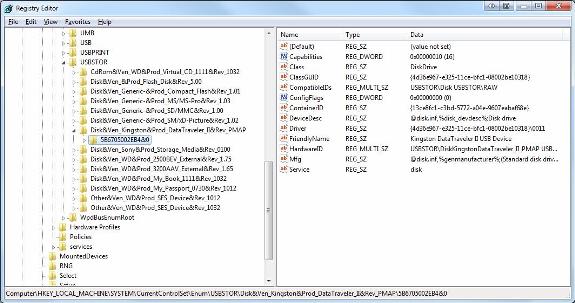
Figure 1: List of some USB devices plugged into a recent Windows 7 computer
After obtaining a list of used devices, you need to determine whose devices they are. This can be done but there must be some additional steps. In the registry, first visit HKLMSYSTEMMountedDevices . Within this area, you can search for the serial number of the device in question. After finding the serial number, this key will give you the GUID associated with the device.
After obtaining the device GUID, you need to focus on personal profile on the computer. Inside each users profile folder (C: Users) there will be an NTUSER.DAT file. This file can be opened with the system registry editor with administrator privileges. To bind certain users to any device, you need to browse to the directory below inside NTUSER.DAT hive: SoftwareMicrosoftWindowsCurrentVersionExplorerMountPoints2 . Here you can search the GUID of the device in question. If it is found, the user is logged in when the USB device is plugged into the system. Note that this search must be done for all users on the system when trying this type of correlation.
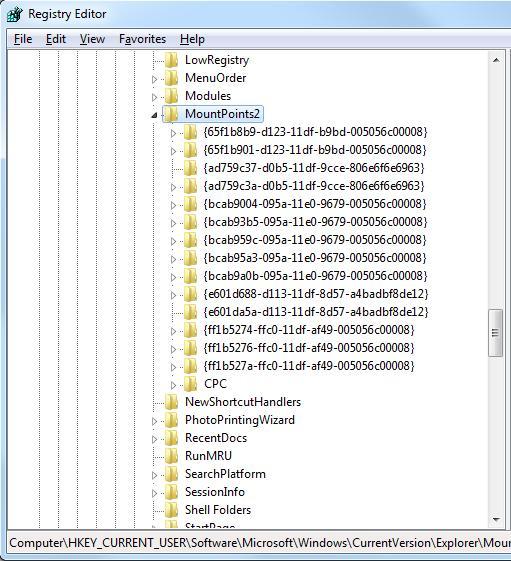
Figure 2: Searching in the NTUSER.DAT file to determine the USB GUID
One of the most important aspects of research is finding the timing of events around the thing being investigated. The important thing to know here is when the suspect USB is connected or disconnected from the system.
Determining when the device is first connected to the system is quite easy in case you already have its serial number (how we did it in the previous steps). With that information, go to file C: Windowsinfsetupapi.dev.log and perform a search for that serial number, when you will know when it was first plugged into the system.
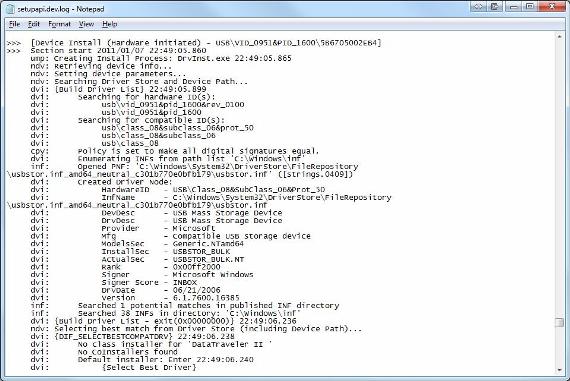
Figure 3: Search in the setupapi.dev.log log file to determine when the USB device was first plugged into the system
On the other hand, we also need to determine when the device is most recently connected to the system. To access this information, we just need to look in the registry at HKLM / System / CurrentControlSetEnumUSBVID_12345 & PID_12345 , replacing '12345' here with the company name and the product ID we have obtained from the previous step. Here, you can export the registry key as a text file to see when the latest key was written. This is done by clicking File, then Export from within regedit, when the key is selected.
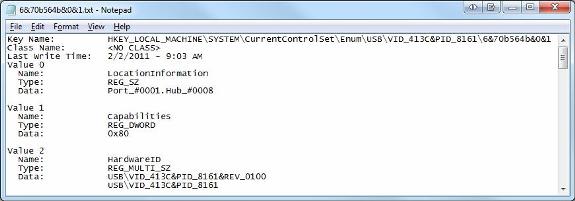
Figure 4: Determining the last time the USB was connected from the registry
Automatically extract
In addition to finding the information above, there are many tools that can help you do this.
The two tools we introduced here are USBDeview and Windows USB Storage (USBSTOR) Parser. The first tool, USBDeview has a GUI interface, can extract and display the information we can find by manual method above. This is a free utility and you can download it here. The second tool we mentioned has similar functionality and can run on both Windows and Linux. You can download that tool here.
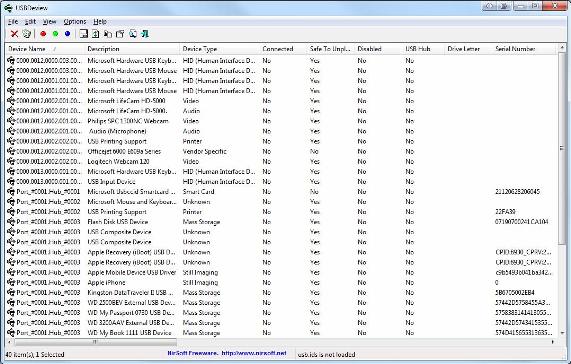
Figure 5 :: Use USBDeview to view files generated by USB plugging
Conclude
Unless in a complete environment with no USB devices, we may not have to pay attention to how these devices relate to system security. It is almost impossible, so we think this article has a lot of useful knowledge that can help you find the cause of things.
You should read it
- Find and remove Malware with Sysinternals Tools - Part 3
- Check the safety of files from Windows 10 desktop easily with VirusTotal X
- Why is the security tool only quarantined rather than deleting infected content?
- How to fix Facebook catch virus scan, tell the computer to be infected with malware
- Innovate or lose in the fight against malware
- Hackers use a map to track the situation of the Corona virus to spread malware
- Is it better to clean, isolate or delete viruses in malicious files?
- Fileless malware - Achilles heel of traditional antivirus software
May be interested
- Web11: HTTP Cookies and some security issues
 in this article, tipsmake.com learns about cookies and related security issues.
in this article, tipsmake.com learns about cookies and related security issues. - List of most advanced countries in AI 2024
 the ranking of the 10 most advanced countries in ai 2024 was released by zerobounce after analyzing private investments made over the past decade, the number of ai-related startups and standards. workforce-related criteria such as the proportion of ai professionals and related job postings.
the ranking of the 10 most advanced countries in ai 2024 was released by zerobounce after analyzing private investments made over the past decade, the number of ai-related startups and standards. workforce-related criteria such as the proportion of ai professionals and related job postings. - Face some new hacking techniques related to Bluetooth technology
 hackers can easily take advantage of the vulnerabilities available in the bluetooth protocol to deploy various infringing activities.
hackers can easily take advantage of the vulnerabilities available in the bluetooth protocol to deploy various infringing activities. - The macOS Mail app has security holes related to the Siri virtual assistant application
 the snippets.db file in the database stores information from mail and other applications that are storing unencrypted email content.
the snippets.db file in the database stores information from mail and other applications that are storing unencrypted email content. - SD-WAN security options
 let's look at sd-wan security and partnerships with suppliers, including aruba, cisco, riverbed and silver peak.
let's look at sd-wan security and partnerships with suppliers, including aruba, cisco, riverbed and silver peak. - Security researcher identified Sharpshooter spy attacks related to the Korean hacker group
 the finding comes through new evidence collected by researchers after analyzing a command and control server (command-and-control server - c2).
the finding comes through new evidence collected by researchers after analyzing a command and control server (command-and-control server - c2). - Zoombombing: What it is and how you can prevent it in Zoom video chat
 video-conferencing software zoom has been drawing attention from researchers and journalists lately for a number of potential privacy and security issues, as use of the platform surges due to an increase in coronavirus-related remote working.
video-conferencing software zoom has been drawing attention from researchers and journalists lately for a number of potential privacy and security issues, as use of the platform surges due to an increase in coronavirus-related remote working. - Prevent Zoombombing: Change these 4 Zoom settings now for secure video chat
 video-conferencing software zoom has been drawing attention from researchers and journalists lately for a number of potential privacy and security issues, as use of the platform surges due to an increase in coronavirus-related remote working.
video-conferencing software zoom has been drawing attention from researchers and journalists lately for a number of potential privacy and security issues, as use of the platform surges due to an increase in coronavirus-related remote working. - Microsoft officially submitted an application to join 'Linux secretion'.
 if they are included in this 'secret society', microsoft will have early access to linux-related security vulnerabilities.
if they are included in this 'secret society', microsoft will have early access to linux-related security vulnerabilities. - Exploding bank code
 security firm trend micro has released a report on the security situation in the third quarter of 2013, notably the explosion of malicious code related to online banking.
security firm trend micro has released a report on the security situation in the third quarter of 2013, notably the explosion of malicious code related to online banking.










 How do Sony customers protect themselves?
How do Sony customers protect themselves? Protects Flash drive data in a comprehensive way with TrueCrypt application
Protects Flash drive data in a comprehensive way with TrueCrypt application How to detect your PC and email is being monitored?
How to detect your PC and email is being monitored? The best computer protection software
The best computer protection software Use Kaspersky Security Suite CBE 11 for free
Use Kaspersky Security Suite CBE 11 for free Set the shutdown or hibernate time for the computer
Set the shutdown or hibernate time for the computer